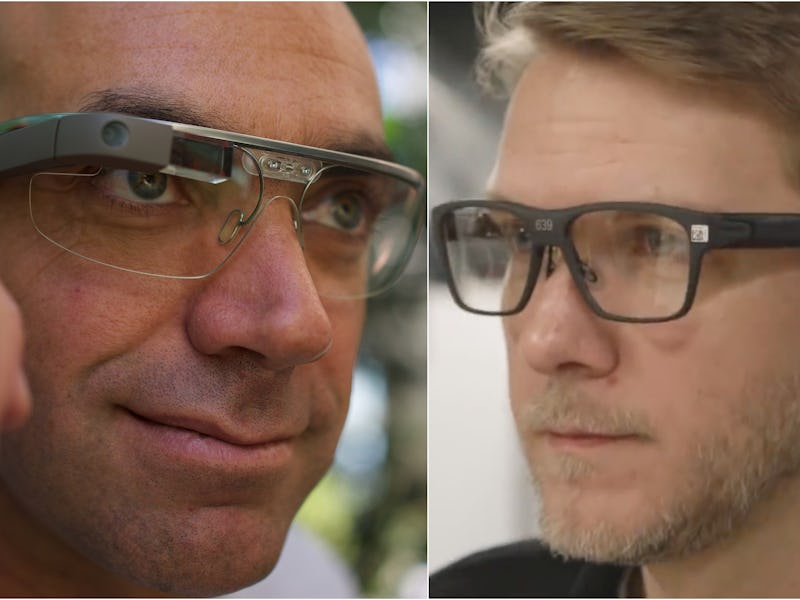Smart Glasses Are Back: How Intel Vaunt Stacks Up to Google Glass
Futuristic eyewear is here again.

It’s been six years since Google first unveiled its smart eyewear to the world, but it still hasn’t sparked the revolution some anticipated. Instead, wearers of the $1,500 headsets were mocked as “glassholes,” and efforts like Apple Watch and Fitbit consigned notifications-in-your-eyes to the scrapheap of history.
Until now. Intel Vaunt, revealed in a Monday article in The Verge, is the company’s attempt to make smart glasses that don’t look goofy. It’s perhaps the first thing you notice about the eyewear. Unlike Google Glass, which featured a bulky camera on one side and a rather odd chunk of display at the side, Vaunt looks a lot like a regular set of glasses at first glance.
Here’s how the Vaunt (which has no release date as of yet) compares to the Enterprise edition of Google Glass that launched in July 2017:
Weight
Vaunt was developed to weigh under 50 grams (1.76 ounces), where Google Glass came in at 33 grams. It sounds like a serious saving in weight, but bear in mind that the Glass acts as more of a secondary pair of glasses that go over the top of existing pair, where Vaunt acts as more of a pair unto themselves.
Display
Google Glass uses a prism that’s the equivalent of a 640 by 360 screen, with the wearer looking up at the top right to see their notifications in full color glory.
Google Glass.
Vaunt, on the other hand, shines a laser into the eyes by reflecting a red-monochrome image of around 400 by 150 pixels to your retina. It’s low-power, and disappears from sight when the user looks away.
Connectivity
Google Glass has an eight-megapixel camera for taking snaps, as well as a barometer, capacitative head sensor, hinge sensor for checking if the glasses are open, and both GPS and GLONASS navigation. It also uses Bluetooth and Wi-fi, with an onboard Android OS running the show for apps.
Vaunt eschews most of those extras in favor of Bluetooth for connecting to an Android or iOS device, similar in fashion to a smartwatch. Commands run through the ether to the glasses, displaying whatever is fed through. A compass and accelerometer are used to interact with notifications.
Battery life
The battery life for the Vaunt is still unconfirmed, but the company is targeting 18 hours of runtime. The Enterprise Glass, on the other hand, uses a 780 mAh battery to offer enough power to get through an eight-hour work day.
Price
As the Enterprise edition of the Google Glass ships directly to manufacturer, it’s hard to know for certain how much each one costs. However, ACGO, one of the first buyers of the new edition, paid between $1,300 and $1,500. Intel has yet to confirm pricing for Vaunt, but with the pared-down functionality expect a comparatively lower price.